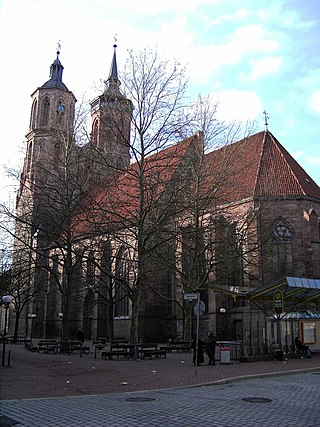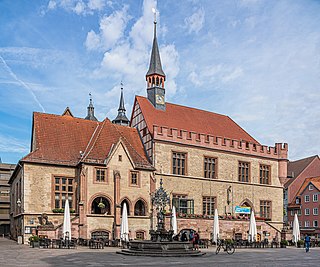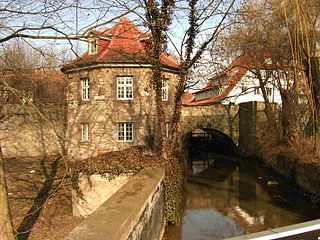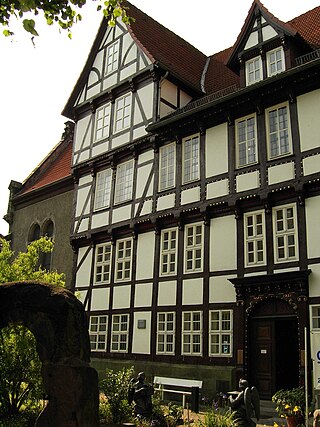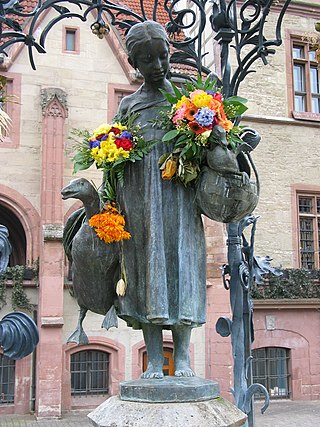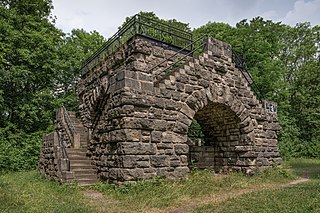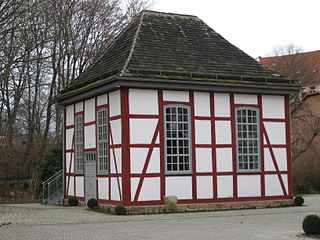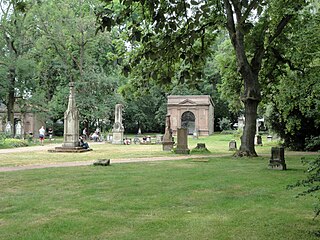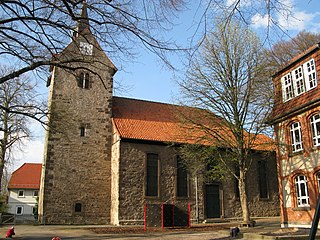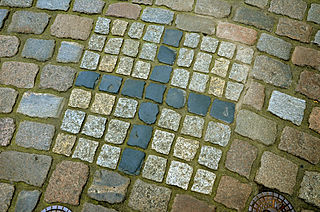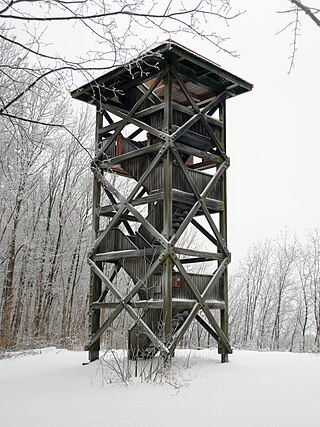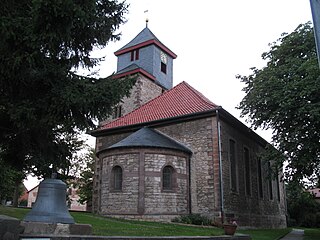26 Sights in Göttingen, Germany (with Map and Images)
Legend
Welcome to your journey through the most beautiful sights in Göttingen, Germany! Whether you want to discover the city's historical treasures or experience its modern highlights, you'll find everything your heart desires here. Be inspired by our selection and plan your unforgettable adventure in Göttingen. Dive into the diversity of this fascinating city and discover everything it has to offer.
Sightseeing Tours in Göttingen1. Saint John's Church
St. John's Church in the old town of Göttingen in Lower Saxony is a three-aisled Gothic hall church from the 14th century. With its towers visible from afar, it is one of the city's landmarks. Its patron is John the Baptist.
2. St. James's Church
The Evangelical Lutheran parish church of St. Jacobi in the old town of Göttingen in Lower Saxony is a three-aisled Gothic hall church built between 1361 and 1433. The patron saint of the church is James the Elder. With a height of 72 metres, the tower of the church is the tallest building in Göttingen's old town. The Gothic winged altar from 1402, which is located in the choir of the church, is of supra-regional importance.
3. St. Paul
St. Paul's is a neo-baroque Catholic parish church in Göttingen, Germany. It is located in the lower eastern quarter on Wilhelm-Weber-Straße. Her parish belongs to the Göttingen deanery of the Diocese of Hildesheim in Lower Saxony (Germany).
4. Portal des ehemaligen Universitätsreitstalls
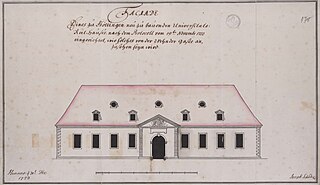
The University Riding Stables of the University of Göttingen was a Baroque building complex built between 1734 and 1736 in the city centre of Göttingen and consisted of an indoor riding arena with stables and an open-air riding arena. The building was the first completed new building for the university, which was founded in 1734 and ceremonially inaugurated in 1737.
5. Old Town Hall
The Old Town Hall in Göttingen was built in several construction phases from 1270 onwards and was the seat of the council and administration of the city of Göttingen until 1978. It stands on the west side of the market square in the middle of the old town. Today it serves representative purposes, for events and exhibitions.
6. Bismarck Cottage
The Bismarck House in Göttingen is the last surviving tower of the outer medieval fortification ring of the city. It got its name because the later Reich Chancellor Otto von Bismarck lived here for about five months during his studies in Göttingen in 1833. Today, a small museum is set up in the tower.
7. Schwarzer Bär
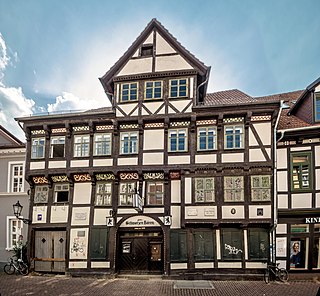
The Black Bear in Göttingen is a half-timbered house from the Renaissance period. The house name was first mentioned in 1592; the traditional restaurant Zum Schwarzen Bären has been in existence since 1637. The address in the old town is Kurze Straße 12.
8. Bahnhof
Göttingen railway station, known in German as Bahnhof Göttingen, is an InterCityExpress stop on Germany's domestic long-distance rail network and the only passenger station of the city of Göttingen. Built in 1854 as the terminus of the Hanoverian Southern Railway, the station lies west of the medieval town centre. The station today has four platform islands each with two through tracks. In addition there is a through track for goods traffic between the station building and the platforms.
9. Königspfalz Grona
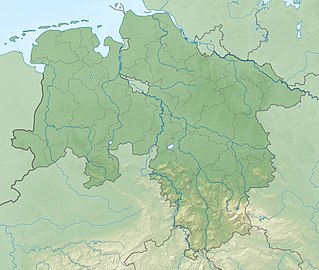
The Palatinate of Grona was a royal palace in the area of today's city of Göttingen. It was one of the roots of today's Grone district, but is located in the neighboring district of Weststadt. The Palatinate was first mentioned in a document in 915 as Grona Castle. It is the place of death of Emperor Henry II (1024) and was completely demolished by the citizens of Göttingen in 1387.
10. St. Michael's Church
St. Michael is the oldest Catholic church in Göttingen in Lower Saxony. It is located in the historic city center, is the parish church of the parish of St. Michael in the deanery of Göttingen of the Diocese of Hildesheim and at the same time a Catholic city church in Göttingen.
11. St. Nikolai
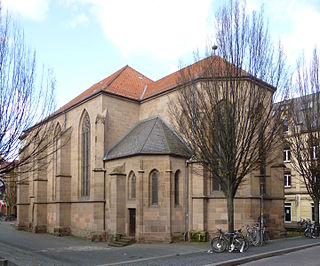
The St. Nikolai Church in the old town of Göttingen in Lower Saxony is a Gothic hall church with Romanesque origins. Since 1822, it has been the property of the Georg-August-University as a university church and is subordinate to the respective dean of the Faculty of Theology.
12. Universitätsaula
The auditorium of the Georg-August-University was inaugurated in 1837 on the occasion of the first centenary of the University of Göttingen as an auditorium in the classicist style, on behalf of King Wilhelm IV of Great Britain and Hanover on what was then Neuer Markt, today Wilhelmsplatz.
13. Städtisches Museum
The Städtisches Museum Göttingen is a collection of history and cultural history and, with around 150,000 objects, documents the cultural-historical development of the city of Göttingen in Lower Saxony and the surrounding area of Göttingen from the first settlement to the founding of the Georg-August-Universität to the present day.
14. Goose Girl Well
The Gänseliesel is a fountain which was erected in 1901 in front of the medieval town hall of Göttingen, Germany. Although rather small in size, the fountain is the best-known landmark of the city. Today, it is an essential part of graduation celebrations, for every student who finishes a doctorate at the University of Göttingen has to climb the fountain and kiss the statue of the goose girl.
15. Bismarckstein
The Bismarck Stone in the city of Göttingen in Lower Saxony is a Bismarck monument near the Klausberg. The memorial was inaugurated in 1903 in honor of the former Reich Chancellor Otto von Bismarck and is also jokingly referred to as the "elephant toilet" in the vernacular because of its grotesque shape.
16. Kunsthaus Göttingen
Kunsthaus Göttingen is an exhibition space in Göttingen, Germany. Its focus is on contemporary art for works on paper, photography, and new media with an international emphasis. The Kunsthaus is part of KuQua.
17. Biodiversitätsmuseum
The Zoological Museum of the University of Göttingen was part of the University of Göttingen, which emerged from the Natural History Museum of the University of Göttingen and housed the publicly accessible part of an extensive research collection of taxidermy and skeletons. The museum was part of the Johann Friedrich Blumenbach Institute of Zoology and Anthropology. It was located in the former Zoological Institute of the University at Berliner Straße 28, near the Göttingen train station.
18. Bodenfelder Synagoge
The synagogue in Bodenfelde, a community in the district of Northeim in Lower Saxony, was located at Mühlenstraße 24 in Bodenfelde on a farm property and has been located at Angerstraße 14 in the city of Göttingen since 2008.
19. Bartholomäusfriedhof
The Bartholomew Cemetery in Göttingen is a historic cemetery that houses the graves of some important personalities from culture and science, including Gottfried August Bürger and Georg Christoph Lichtenberg.
20. Martinikirche
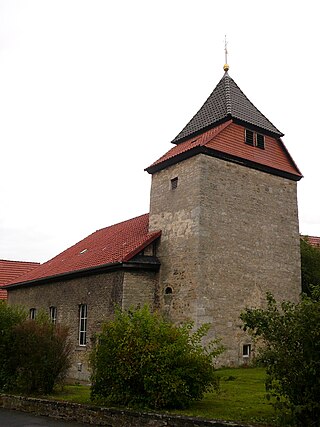
St. Martin's is a Lutheran church in Groß Ellershausen, Göttingen, Lower Saxony, Germany. It is significant as possibly retaining the oldest existing structure, its tower, in southern Lower Saxony. While the details of the origin of the church building have been lost in the mist of history, architectural analysis indicates that the Romanesque church tower was most likely built in the tenth or eleventh century. The remains of a hearth on the second floor have led to the conclusion that the tower was originally a Wohnturm of a titled family, probably the Herren von Ellershausen, which lived there at the time. The church's ship is much younger, probably having been built or re-built during the Barocque era. It was repaired in 1838..
21. Rieswarte
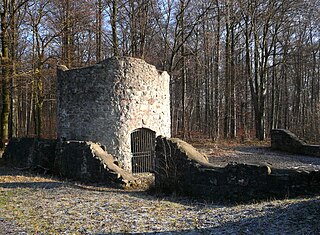
The Rieswarte or Nikolausberger Warte is located northeast of the Göttingen district of Nikolausberg in Lower Saxony. It is the ruin of a watchtower of the outer ring of the medieval Göttingen Landwehr.
22. Eulenturm
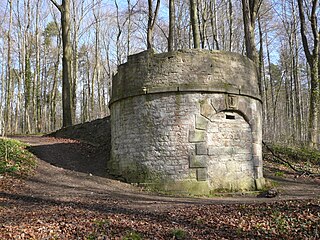
The Owl Tower is a vantage point in the Göttingen Forest east of the built-up area of the city of Göttingen in the Oststadt district. It stands above the Schillerwiese on the lower slope of the Hainberg on a ridge between the valleys Molkengrund in the north and Lange Nacht in the south. The round tower built into the slope with a viewing platform made of limestone and sandstone blocks has a height of about 4 meters at the front. The ground-level tower entrance at the front was bricked up for safety reasons. The Owl Tower was built at the end of the 19th century by the Göttingen Beautification Association (GVV) as part of the development of the Hainberg into a recreation area in the style of a public garden.
23. Sankt Petri
The Evangelical Lutheran Church of St. Petri is located in Weende, a district of the university town of Göttingen in the district of Göttingen in Lower Saxony. The parish belongs to the church district of Göttingen in the Hildesheim-Göttingen district of the Evangelical Lutheran Church of Hanover.
24. Vierkirchenblick
The Vierkirchenblick in Hanover is a location in front of the Marktkirche, from which visitors can see the four church towers of the Evangelical Lutheran main churches of the capital of Lower Saxony. The position at Hanns-Lilje-Platz on the corner of Kramerstraße and Knochenhauerstraße is marked by a stone cross in the pavement. From here, in addition to the tower of the Marktkirche, the towers of the Aegidienkirche, the Kreuzkirche and that of the Neustädter Kirche built in the Calenberg Neustadt can be seen. The symmetrical cross is part of a circle of cobblestone stones of different colours, over which the red thread passes.
25. Mackenröder Spitze
The Mackenröder Spitze, at about 427.5 m above sea level (NN), is the highest hill in the Göttingen Forest and lies on the boundary of the town and district of Göttingen, in South Lower Saxony in Germany.
26. St. Pankratius
The Evangelical Lutheran Church of St. Pankratius is located in Esebeck, which, together with Elliehausen, forms a village in the university town of Göttingen in the district of Göttingen in Lower Saxony. The parish of Esebeck merged with the parish of Elliehausen to form the St. Martini parish of Elliehausen-Esebeck. They belong to the church district of Göttingen in the district of Hildesheim-Göttingen of the Evangelical Lutheran Church of Hanover.
Share
How likely are you to recommend us?
Disclaimer Please be aware of your surroundings and do not enter private property. We are not liable for any damages that occur during the tours.
